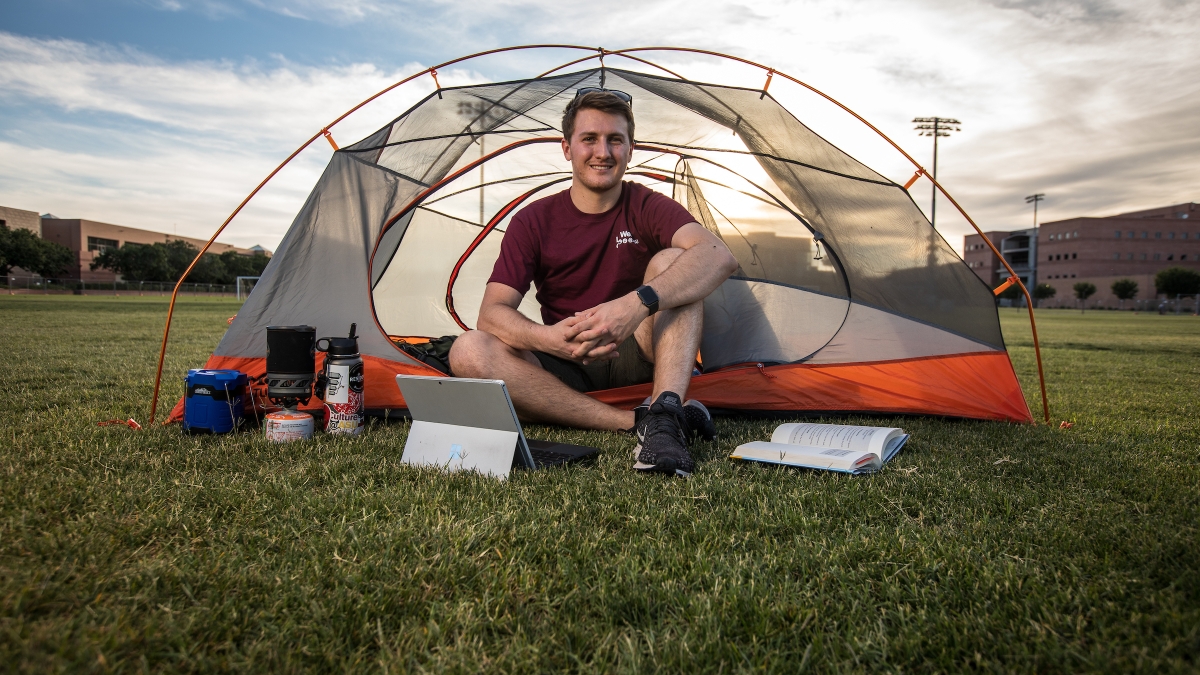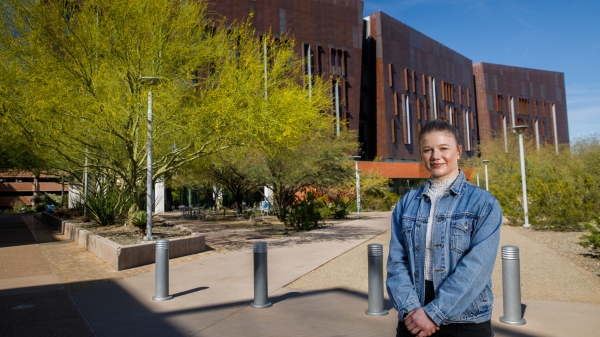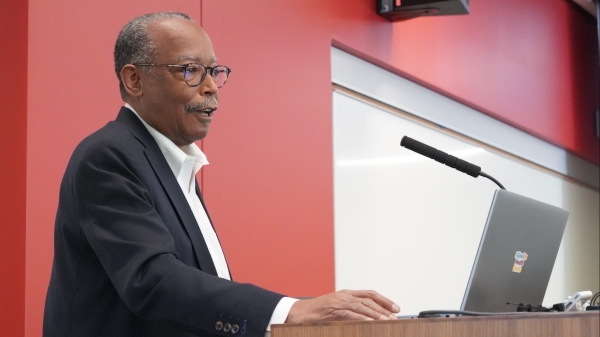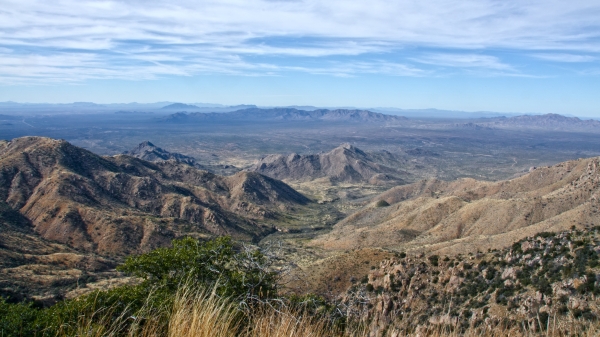Mastering the great outdoors — online
Outdoor rec class successfully goes virtual

Whether you’re going camping in the Superstition Mountains for the weekend or spending two months in the Himalayas, you’re going to need some basic skills: pitching a tent, cooking on a tiny stove and layering your clothes to suit the weather.
Joey LaNeve teaches those skills at Arizona State University in a class called Introduction to Outdoor Recreation.
Some of his students have no experience of the outdoors. Many have never camped before. Others have a good amount of experience under their belts but want to step up their game and take on something more challenging. They share what they’ve learned and it helps the whole class, including when trips have been disasters.
But now that classes have gone online, how do you teach mastery of the outdoors from the indoors?
LaNeve has taught the class for two semesters. Before the pandemic, they met in a classroom for a 20- to 30-minute lecture about different topics, such as what to think about when you’re going backpacking or kayaking. Then the class would do an outdoor activity like hiking "A" Mountain, canoeing in the pool or learning how to pitch a tent.
Now the class is a little different, but the main point remains the same.
“I still want them to make sure they’re getting that outdoor experience,” LaNeve said.
Class meets twice a week. He gives the lecture (it’s a little bit longer), then there’s a class discussion on what they’ve noticed on outings. The next class they go for an outdoor activity on their own; it might be a hike in one of the preserves or an overnight camping trip. “They have to log that and send it to me for their participation points for Thursday’s class,” he said.
One of the assignments is to plan a trip. LaNeve has them pick from a range of state and national parks or popular trails in Arizona. After a visit, they talk to the rest of the class about what the destination is like, what gear is most suitable — everything you want to know before heading into the wilderness.
“Some have told me they enjoyed the content and they feel like they’ve learned some tips and tricks,” LaNeve said. “That’s what I was hoping to get out of them. … That was a good way to make it interactive.”
Janet Barrone-Curry is the Physical Activity Course program coordinator for the Mary Lou Fulton Teachers College.
“He really has done a really good job of having students delve into the content and become excited about the opportunity and then presenting it to someone else,” she said. “Their discussions on this are pretty in-depth.”
Barrone-Curry wanted to offer a class preparing students to go on some of the outings offered by the Sun Devil Fitness Center.
“This class was made to introduce students how to do some ordinary activities, to give them some basic knowledge so when they went on trips like up north to Flagstaff or on a weekend camping trip, they would be prepared to do basic things like lighting a match in the wind or (putting) up a tent," she said. "These are things that people who are used to camping are basic things to know, but if they grew up in a family where they didn’t go camping, then how would they learn these things?”
In LaNeve's class, they learn fundamentals, but also how to tailor what they’ve learned for themselves. They have a process to go through: checking the weather forecast, the terrain, where water sources are located. They go out, plan a trip, come back and give a presentation on it. What do you need to know about going to this particular place? Is it prone to flash flooding? Going to the Mogollon Rim is a different proposition than a trip into the Sonoran Desert.
LaNeve, who also oversees the aquatics program at the Sun Devil Fitness Center on the Tempe campus, grew up camping with his family in Florida, then taught canoeing, kayaking and sailing at a lake while he was an undergrad. He graduated last May with a master’s degree in higher education. He had never seen snow before he moved to Arizona and has discovered skiing and snowboarding.
Barrone created the Physical Activity Course program seven years ago when she came to ASU. It started out with one sport. Then swimming was added. Lifeguarding followed.
“Every time I turned around, someone was saying, ‘Hey, how about this?’” she said.
Now there are 120 classes. A lot of the instructors are experts in their fields. The archery coach coached the U.S. Olympic team, for example. “That’s the level of instruction we have,” Barrone-Curry said.
Top photo: Joey LaNeve, the coordinator for aquatics and safety education through Sun Devil Fitness and Wellness, finished teaching the PPE240: Introduction to Outdoor Recreation through a modified online curriculum due to the coronavirus restrictions. Photo by Charlie Leight/ASU Now
More Health and medicine

First exchange student for Biodesign Institute Europe bridges labs 5,000 miles apart
This spring semester, Grace Colley traveled to Arizona State University and became the first student to participate in the Biodesign Institute Europe student exchange program. In doing so, she helped…

College of Health Solutions hosts visit from leading expert in genomic research
Some fortunate Arizona State University faculty, staff and students were able to gain valuable insights and perspective during a visit by one of the country’s leading figures in health and scientific…

Indigenous ASU research team recommends assistance for tribal members still reeling from COVID-19’s effects
When Matt Ignacio’s tribe, the Tohono O’odham Nation, donated $1 million to Arizona State University to support COVID-19 research, he applied for some of the money to understand and report any…